Fall is an important time for orchard care and there are a number of best practices in November that can help ensure a better harvest next year. Please check out the POP Monthly Orchard Task List for recommended maintenance activities to complete this month.
Here is some more detail on some of the key tasks for November:
Fall is planting time!
It’s not too late to plant! Fall is actually the best time of year to plant most perennial plants, including trees, shrubs, vines, and perennial flowers and herbs. Planting in fall allows for two seasons of cooler weather for plants to get established before the heat of summer. Our preferred planting time is early October through mid November, although most years the ground stays warm enough to plant into December. Fall plantings should be watered twice a week until they go fully dormant.
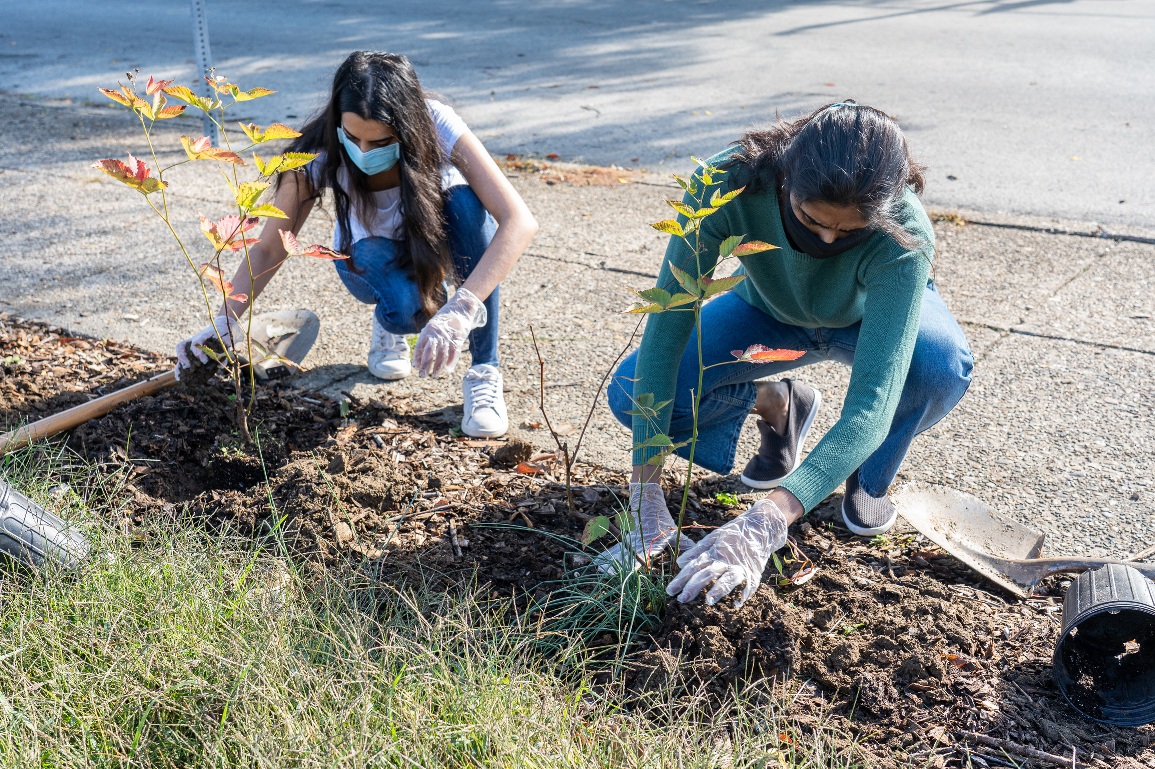
The only orchard plants we generally prefer spring for planting are tender ones (like figs, pomegranates, rosemary, etc) that don’t like the cold and evergreen ones (stone pines, for example), which can dry out in winter conditions.
Orchard Watering
New plantings (from spring or the previous fall) should be watered thoroughly once per week until they drop leaves and go dormant. In most years in our wet climate, established orchard plantings don’t require much in the way of supplemental watering except in the case of extended drought conditions.
Fall Leaf Management in Orchards
As orchard plants begin to drop leaves, there are a few key management practices to keep in mind. Fallen leaves can potentially be a source of disease spores for the next season, but they can also be a precious resource for soil improvement! For these reasons, it is best to either collect fallen leaves or to help them break down in place.
Here are some options for leaf management:
1. Collect fallen leaves:
a. For use in composting (leaves are the ideal ‘brown’ or carbon-rich component in most compost systems).
b. For use in winter protection of tender plants (we often surround figs with wire fencing and then stuff with fall leaves as insulation).
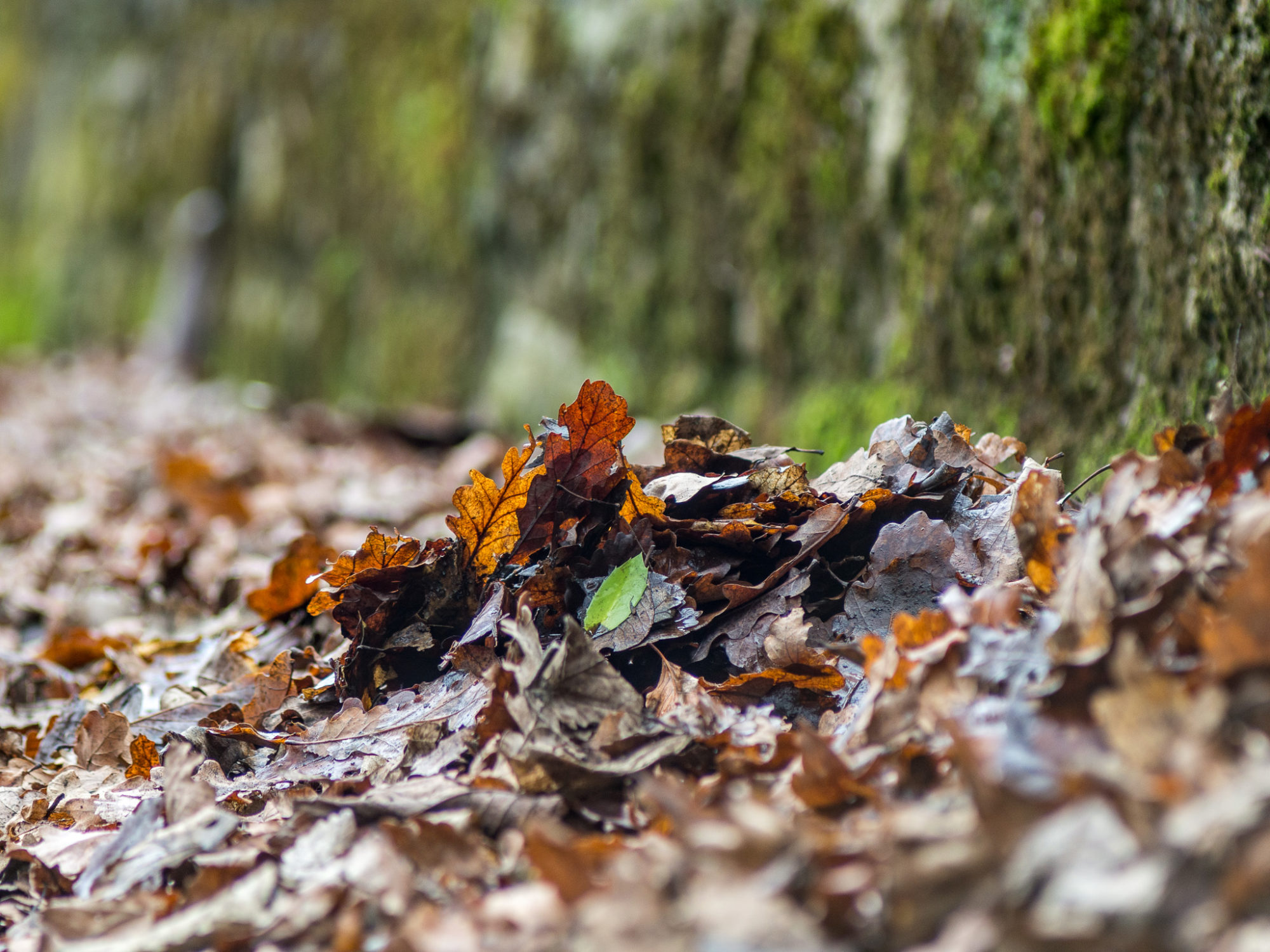
2. Help fall leaves break down in place:
a. Spread 1-2 inches of compost in the orchard after the majority of leaves have fallen.
b. Spray compost tea in the orchard after the majority of leaves have fallen.
Winter Protection for Figs and Pomegranates
It’s not quite time yet, but cold-sensitive orchard plants like figs and pomegranates benefit from some winter protection measures. It is strongly advised to wait until they’ve actually gone dormant and dropped their leaves before wrapping or other steps are taken. Remember that these plants are able to take freezing temperatures without damage- it is temperatures below 20 F that can cause injury.
One of the simplest techniques for winter protection of young figs is to tie all the branches as close together as possible, surround the tree with some fencing, and fill the fencing with fall leaves, straw, or other available materials to provide insulation. There are plenty of fall leaves to be had right now- check your neighborhood on trash day if you don’t have enough on site! If available, a tarp can also be placed on top. It is okay if some of the branches stick out. If we have a mild winter, those unprotected branches will be fine; if we get a harsh one, you’ll simply cut them off in the spring after growth begins.
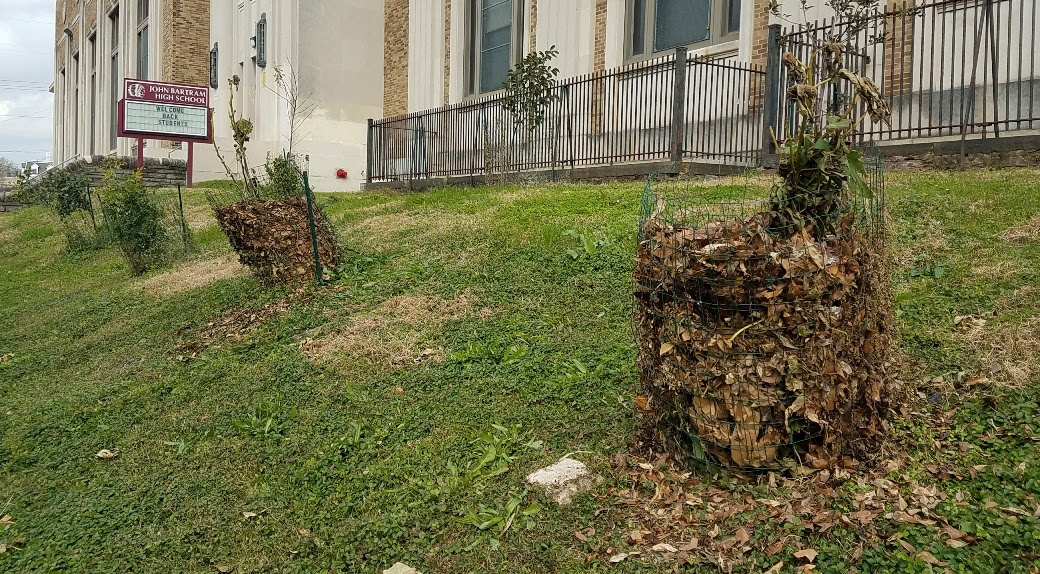
Another easy method for protection is to tie the branches together and surround the whole thing with an old carpet. Layers of burlap, row fabric, or even old bedsheets can also be used, although make sure to attach them securely so they don’t blow away. For older, bigger figs, you may need to wrap individual trunks/branches with this kind of insulation to protect them.
See here for our full article on growing figs in cold climates:
https://www.phillyorchards.org/2009/10/17/fresh-figs-for-cold-climates/
Emergency Pruning
In our climate, the primary pruning season for fruit trees and other orchard plants is winter when plants are fully dormant. After summer, it becomes increasingly important to limit pruning to emergency pruning only. Fall pruning can result in new growth that doesn’t have time to harden off before winter temperatures hit and at this point, should be limited to emergency pruning of diseased, damaged, or dead wood.
Remember: use sharp, rust-free hand tools and sanitize between every cut for disease prone trees during the growing season. For easy disinfecting, we recommend carrying a spray bottle with you of rubbing (isopropyl 70%) alcohol or a bleach solution (1 part bleach: 10 parts water) to wipe down tools.
Pest and Disease Monitoring & Identification
Many orchard pests and diseases have gone dormant at this point in the season, but it is important to continue weekly monitoring of your plants to identify and manage challenges.
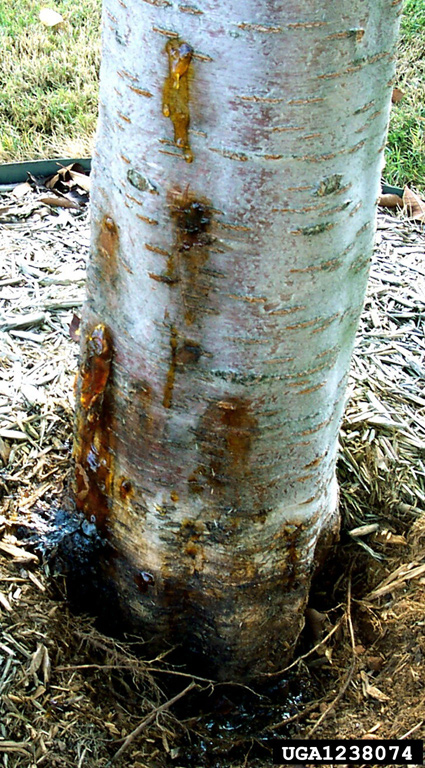
https://www.phillyorchards.org/2015/07/13/peach-apple-and-other-fruit-tree-borers/
Observe your orchard regularly throughout the year for pest and disease problems, identify and respond appropriately. We’ve been distributing physical copies to community partners, but you can also check out POP’s Scouting Guides for pest and disease management available for download on POP’s website:
https://www.phillyorchards.org/?s=scouting+guide&post_type=resource
These guides are intended to help properly identify the insect pests and diseases that affect the following common fruit trees:
Apples
Peaches
Cherries
Plums (& Apricots)
Pears & Asian Pears
The guides include lots of photos and a description of how to identify the particular pest or disease and the damage caused by it. Proper identification is essential to treating these problems, as each has its own unique options for management! Once you have identified a pest or disease, you can then consult POP’s website (and/or other internet sources) for management recommendations by using our search function:
https://www.phillyorchards.org/search/
Remove Damaged and Dropped Fruit
For fall fruits, it is advisable to continue to monitor your developing crops for insect and disease damage and remove the affected fruit. Similarly, it is best to gather any fallen fruit to avoid the further spread of pest and disease challenges. All fruit should be disposed of by adding to a hot compost system, feeding to poultry, or bagging up to remove from the site.
November Harvests!
Yes, there are still some harvests to be had in November! Look out for ripening persimmons, kiwiberries, gingkos, medlars, and hawthorns. Record your harvests using our handy POP Harvest Tracking Sheet.
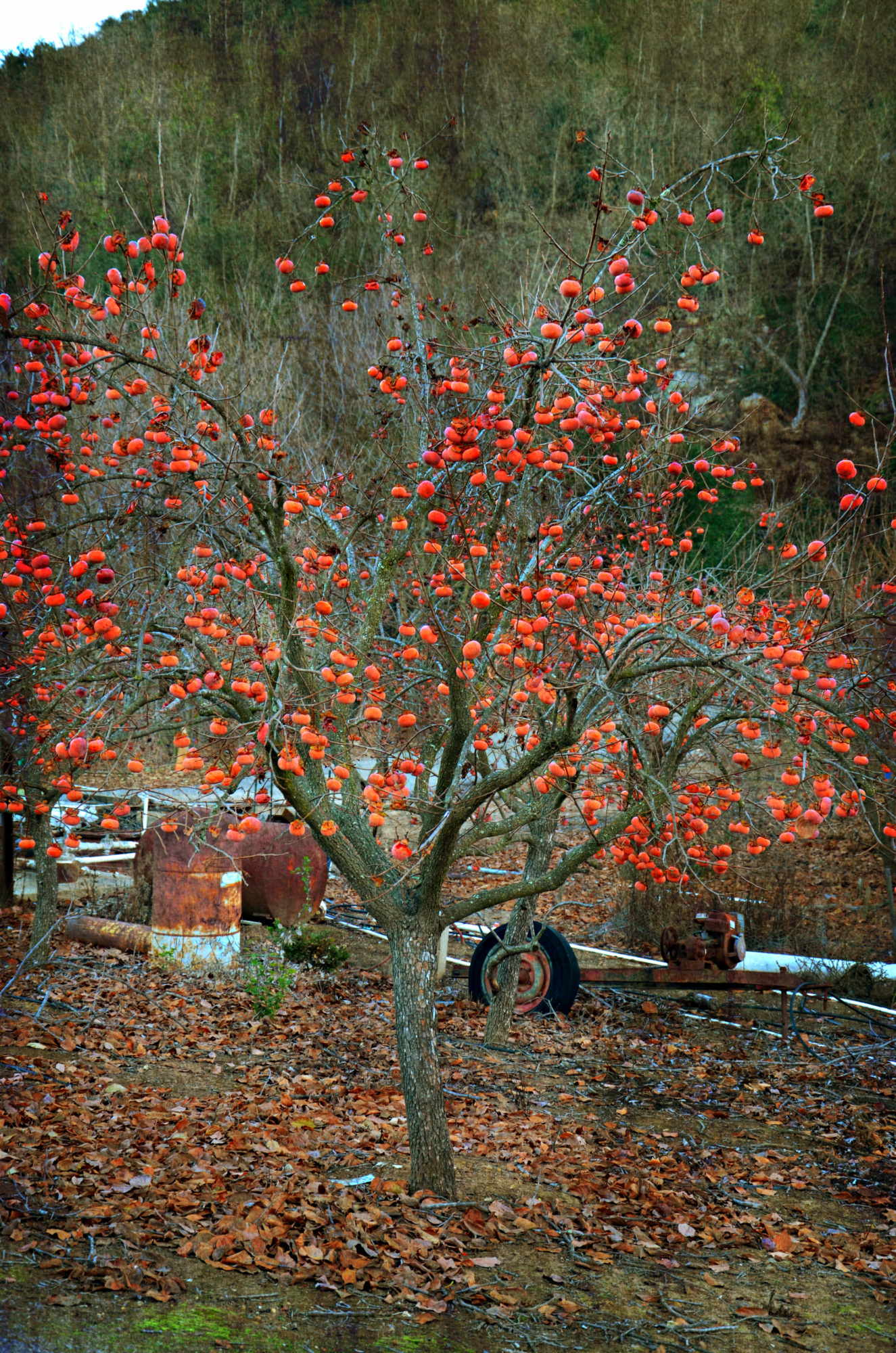
SUPPORT US! If you found this entry useful, informative, or inspiring, please consider a donation of any size to help POP in planting and supporting community orchards in Philadelphia: phillyorchards.org/donate.